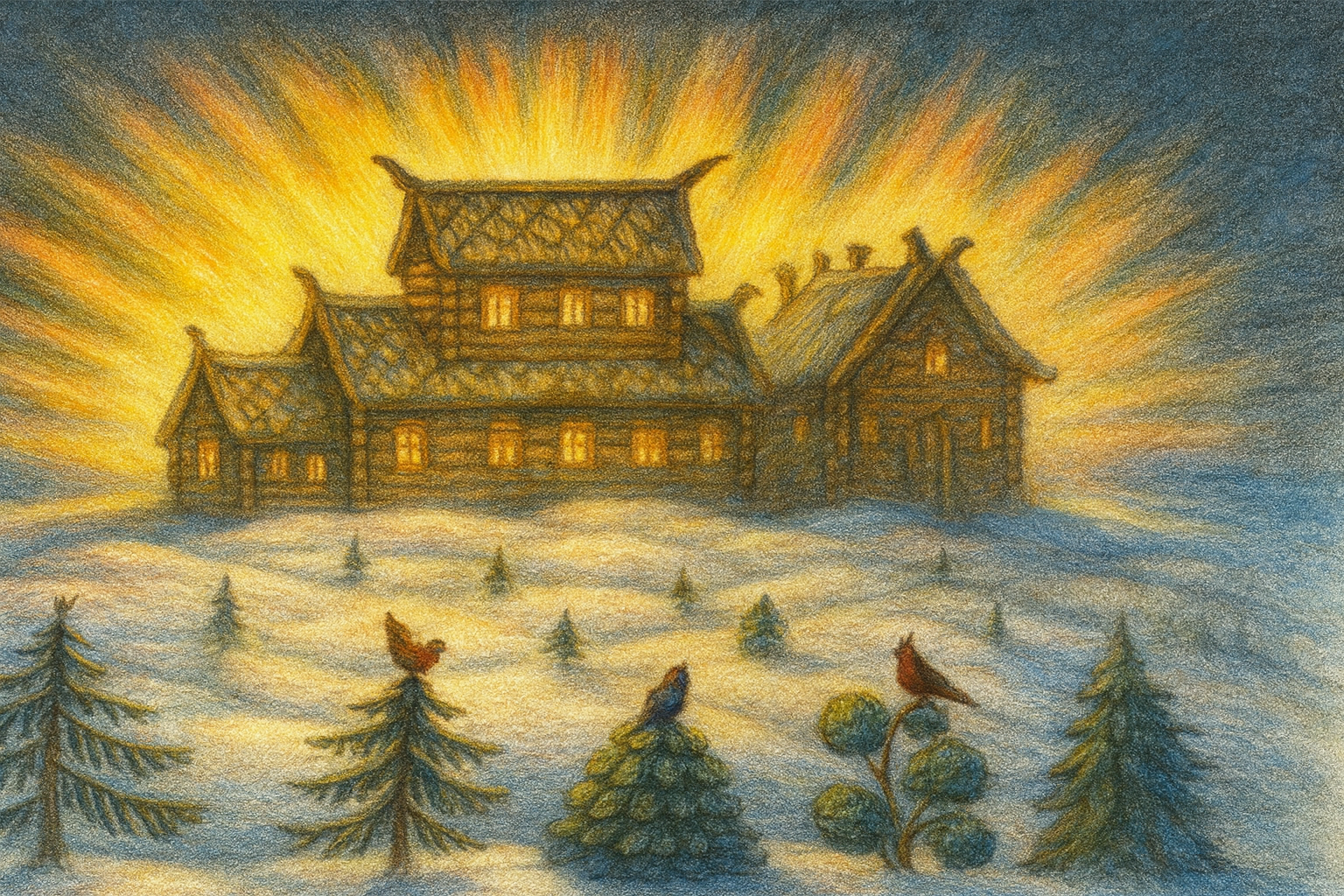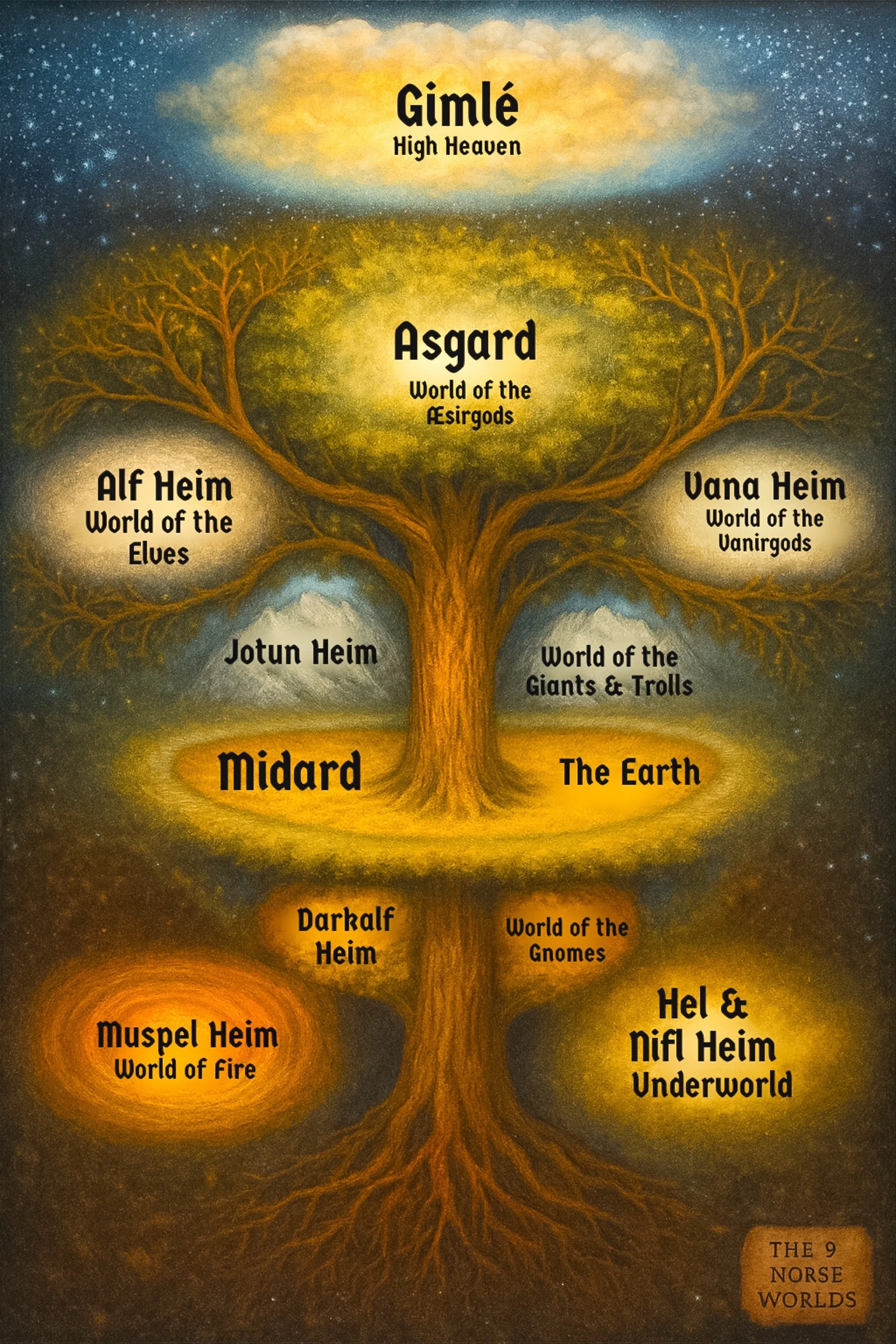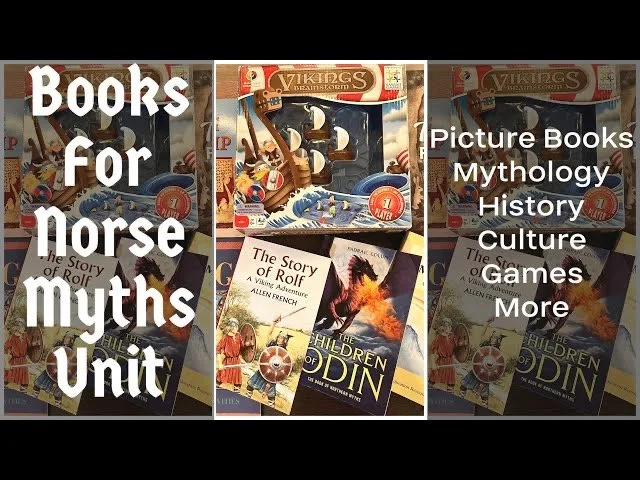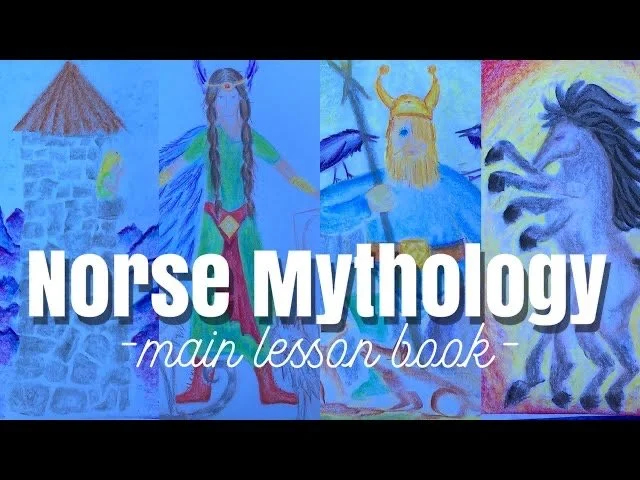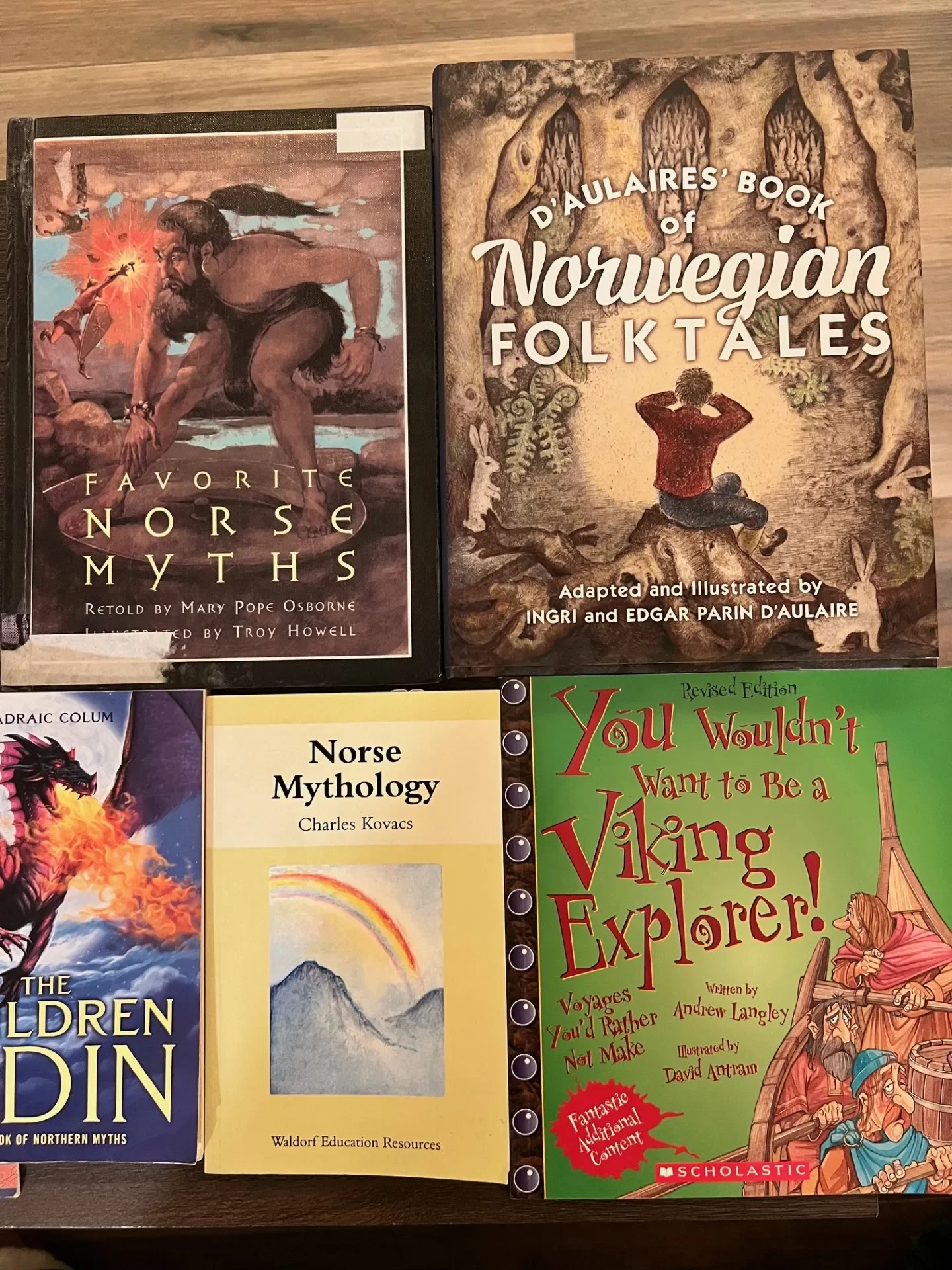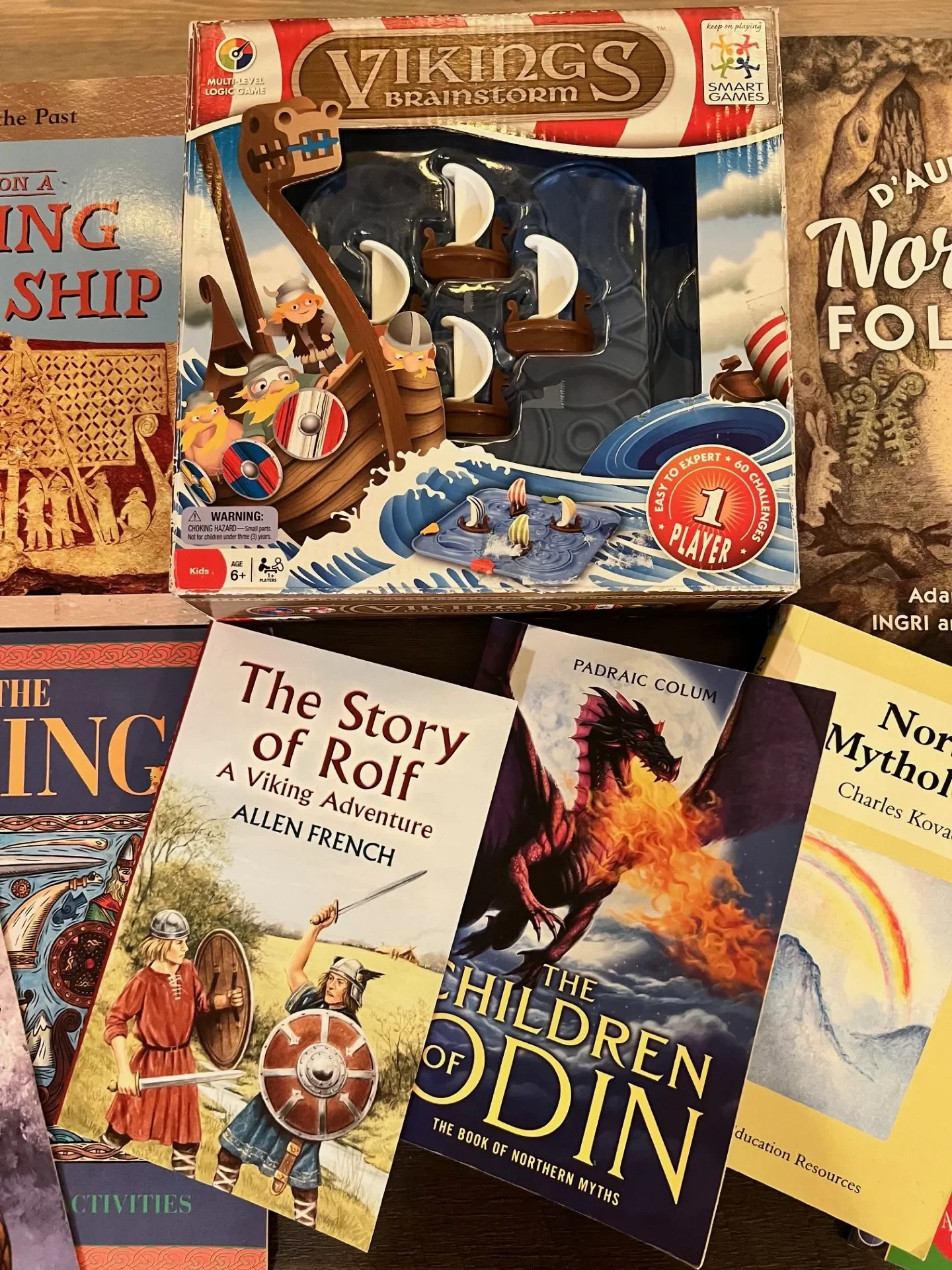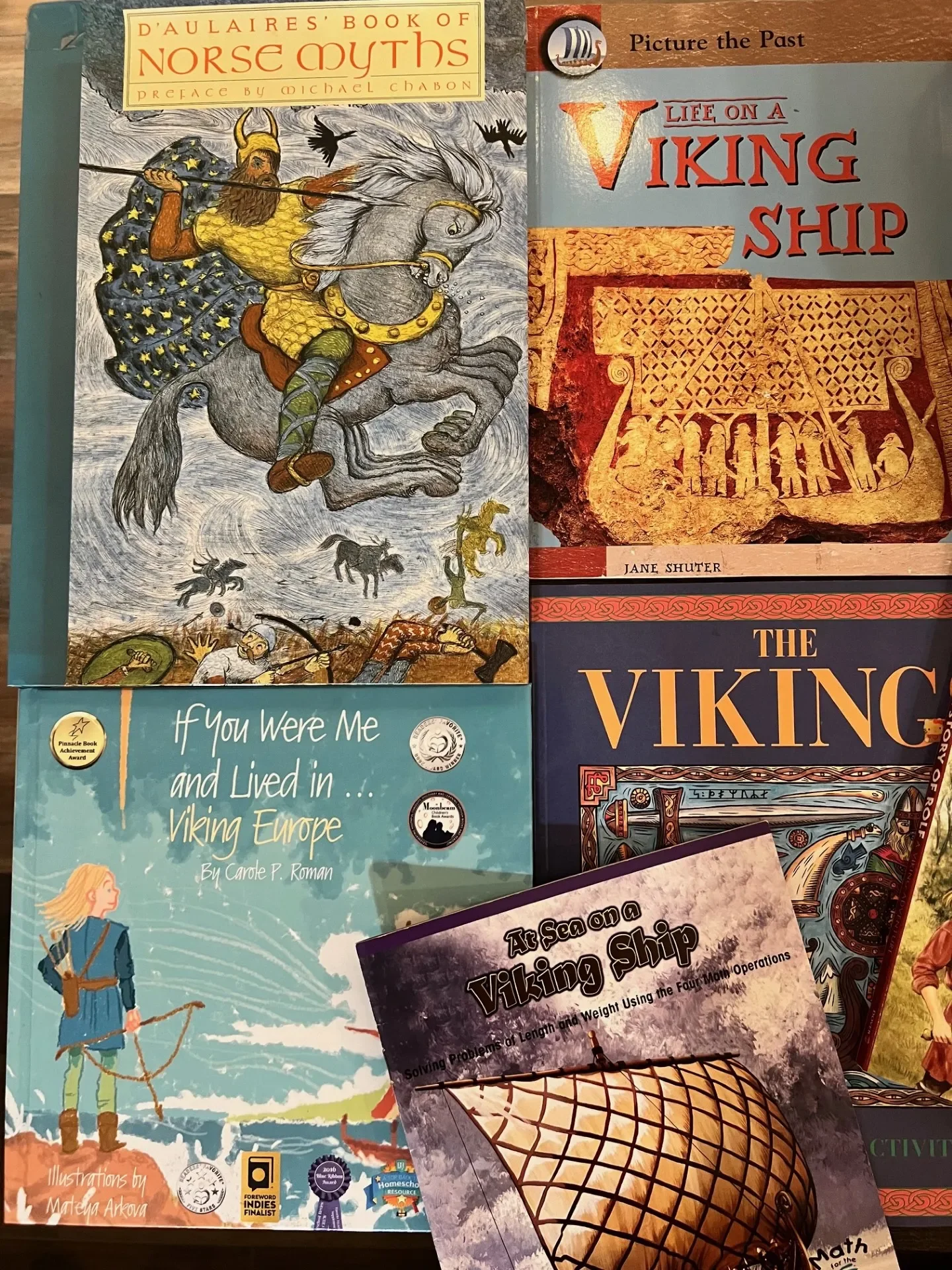
Norse Mythology
Norse Mythology
According to the Waldorf pedagogy children go through developmental changes every seven years. However, there are yearly developmental milestones with those 7-year cycles as well. Following the major transition of the Nine-Year-Change, children aged 10 are going through a developmental change in which there is a sense of separateness from the world. Up until this point, the child was one with his surroundings. Now the child feels their own inner life emerging and a new capacity for self reflection. This may breed a feeling of insecurity and vulnerability as children began to question, have doubt, and seek truth.
In Grade 4, the mythologies, folktales and epic poems are taught just at a time when the child is in turmoil between his inner and outer world. The ‘fall of the divine’ and the journey of the human through life and its suffering is mirrored in the Norse myths the fall of Thor and the loss of his hammer. The creation story of Adam and Eve evoke the same sentiment. In Grade 5 when the children are in this beautiful in-between phase when the limbs have not yet grown beyond the child's knowing as will happen with puberty, when discoordination and clumsiness seems to plague the child, and in the perfect time after the tumultuous nine-year-change and age of the fallen divine comes the time when the child is finally at momentary rest.
Norse Mythology Resources
-
Folktales, Mythology & Heroic Poems
In grade 4, the mythologies, folktales and epic poems are taught just at a time when the child is in turmoil between his inner and outer world. The fall of the divine and the journey of the human through life and its suffering is mirrored in the Norse myths the fall of Thor and the loss of his hammer. The creation story of Adam and Eve evoke the same sentiment.
-
Norse Mythology Main Lesson Block
When we did our Norse Myths, I collected various books and put together my own block without the main lesson book. I sourced various books, but many ended up being similar and redundant. Only one book on Norse Myths is needed, while I ended up with four. One illustrated, one for upper elementary, one vintage and one curriculum based.
-
Quick Look at Norse Myths Resources
Complete book list with links
-
Norse Mythology Block
I'm pleased to share the work of seasoned Waldorf teacher, Susan Darcy. At the Live Education Summer Seminar 2017, Susan gave permission for her main lesson book to be photographed, and later the following year, she gave permission for it to be shared here.
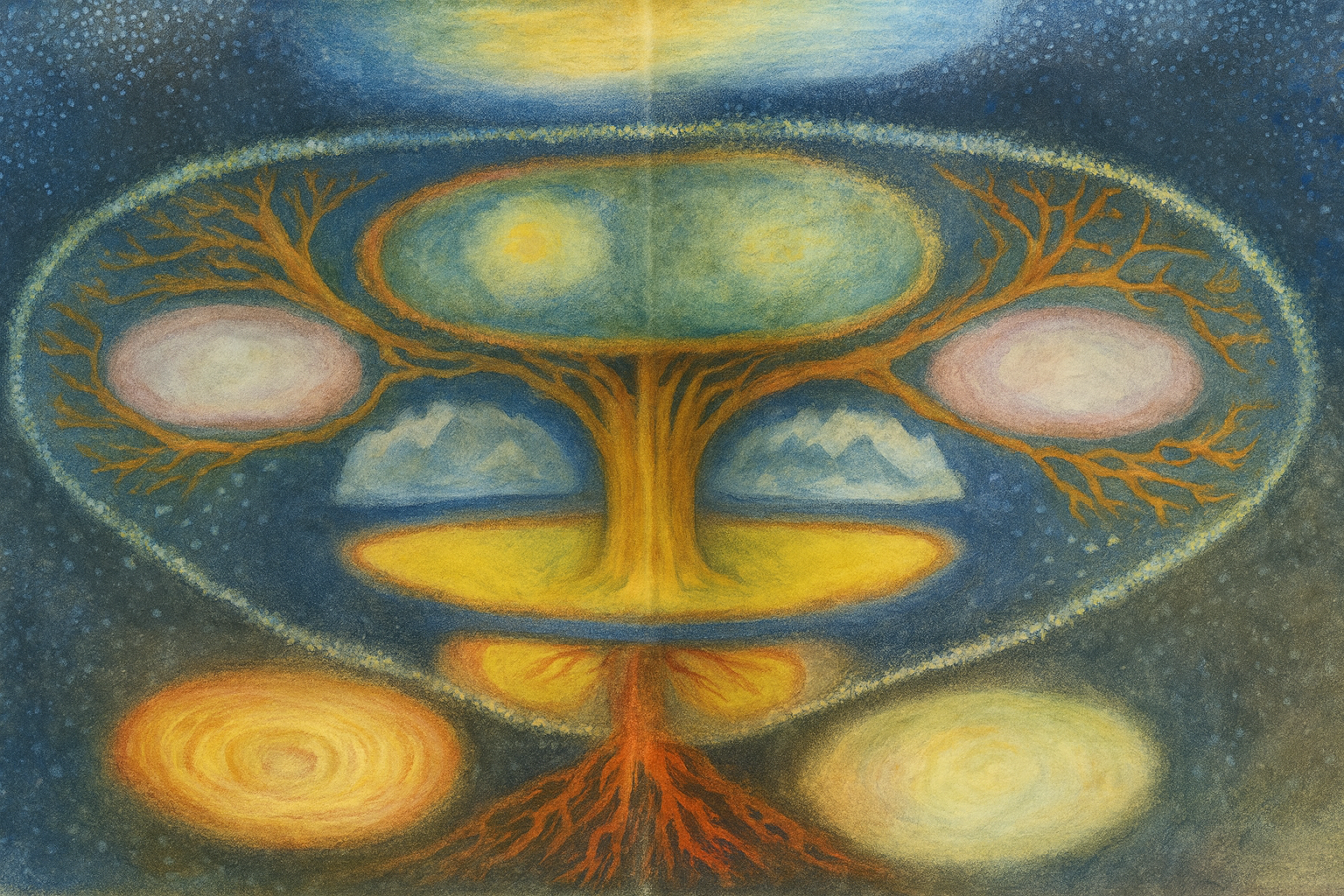
Norse Mythology
Folktales, Mythology & Heroic Poems
Let’s review the stories children will be exposed to and learning from since grade 1. When introducing the letters, the stories of Grimm’s Fairy Tales.
In grade 2, when grammar and spelling are being explored, the stories of Native American Legends and Aesop’s Fables are being told.
In grade 3 when the child is going through their 9-year-change, the Saints’ and Prophets’ stories give the student comfort as they relate to the wandering of Moses in the desert just as the child feels out of sorts himself and looking for stability and control.
In grade 4, the mythologies, folktales and epic poems are taught just at a time when the child is in turmoil between his inner and outer world. The fall of the divine and the journey of the human through life and its suffering is mirrored in the Norse myths the fall of Thor and the loss of his hammer. The creation story of Adam and Eve evoke the same sentiment.
In grade 5 when the children are in this beautiful in-between phase when the limbs have not yet grown beyond the child’s knowing as will happen with puberty, when discoordination and clumsiness seems to plague the child, and in the perfect time after the tumultuous 9-year-change and age of the fallen divine comes the time when the child is finally at momentary rest. The ancient histories including Greek and Roman histories are taught alongside geometry and botany where perfection, idealism and heroes are explored. This is where children may see the heroes and ‘gods’ of ancient Greek and Roman mythologies and the perfection of geometry in math and manifested in plants in the botany main lesson and in space in astronomy main lesson.
Grades 6, 7, 8 focus on European and US history with brief looks at world history.
Resources for Heroic Poems
Norse Mythology Main Lesson Block
Norse Myths Extended Block
When we did our Norse Myths, I collected various books and put together my own block without the main lesson book. I sourced various books, but many ended up being similar and redundant. Only one book on Norse Myths is needed, while I ended up with four. One illustrated, one for upper elementary, one vintage and one curriculum based. While I liked having a historical fiction, and a picture book or two on life in Viking times, one of our favorite books was If You Were Me and Live in Viking by Carol P. Roman. That book was written with the child in mind and is told entirely from the child’s point of view. One thing I love to add when possible is food! I love introducing recipes from around the world or ones that will enhance a lesson. We also found an innovated book that combined math with a viking ship. While I loved the idea, we didn’t utilize it as well I as hoped. While at the Live Education Summer Seminar, teacher Susan Darcy shared with me her main lesson book for Norse Myths and provided permission to share it.
Resources:
Quick Look at Norse Myths Resources
Resources for Heroic Poems
Kalevala: The Epic of the Finnish People (Penguin Classics) Paperback
An Illustrated Kalevala: Myths and Legends from Finland Hardcover – Illustrated
Resources:
Norse Mythology Block
I'm pleased to share the work of seasoned Waldorf teacher, Susan Darcy. At the Live Education Summer Seminar 2017, Susan gave permission for her main lesson book to be photographed, and later the following year, she gave permission for it to be shared here. This main lesson book is grade 4 for Norse Mythology. Seeing to the main lesson book of a Waldorf teacher is not just helpful for other Waldorf teachers, but it is especially helpful for those of us who have not gone through Waldorf training and need all the help we can get! This is a valuable resource, and I'm very thankful that Susan was willing to share her work on this platform.
